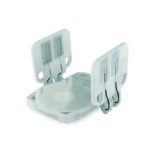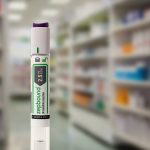Summary: A large-scale national study using wearable smart devices has revealed that high temperatures can worsen obstructive sleep apnea (OSA) symptoms, including increasing apnea-hypopnea index (AHI) and lowering minimum oxygen saturation (MinSpO2). The study analyzed over 6 million days of sleep data from more than 51,000 participants in 313 Chinese cities, finding that elevated temperatures have immediate, short-term effects on worsening OSA severity, especially among older adults, those with obesity, and individuals with conditions like hypertension and diabetes. Researchers emphasize the need for high-temperature adaptive measures, such as air conditioning, to reduce the impact on vulnerable populations.
Key Takeaways:
- Immediate Impact of High Temperatures on OSA: Elevated temperatures were found to increase apnea events and reduce oxygen levels in patients with OSA on the same night, with effects disappearing the following day.
- Wearable Devices Provide Real-World Insights: Using data from wearable devices allowed researchers to monitor sleep health longitudinally, offering a more accurate and scalable alternative to traditional one-night sleep studies.
- Vulnerable Populations at Greater Risk: The study found that high temperatures had a more pronounced effect on men, older adults, individuals with obesity, and those with hypertension or diabetes, underscoring the need for personalized treatment strategies.
Monitoring data from wearable smart devices reveals that high temperatures may worsen obstructive sleep apnea (OSA).
The national longitudinal study quantitatively assessed the relationship between daily temperature and sleep apnea-related indicators based on wearable health devices.
Evidence suggests that ambient temperature may influence OSA incidence and progression. However, most studies have assessed OSA severity using only the apnea-hypopnea index (AHI). Additionally, previous studies were conducted in single cities or sleep centers with small sample sizes, limiting the generalizability of the findings. Furthermore, almost all prior studies used a cross-sectional design with one-night screenings to evaluate OSA, which may lead to diagnostic misclassification or errors, adding considerable uncertainty to the observed associations.
Traditional OSA monitoring typically requires polysomnography, which is expensive, requires professional operation, and disrupts normal sleep behavior, making it unsuitable for real-world sleep health investigations, according to the researchers.
Longitudinal Study Using Smart Wearables
To address these issues, researchers conducted a longitudinal study using sleep apnea screening technology from smart wearable devices. The study included 6,232,056 days of sleep monitoring data from 51,842 participants with moderate to severe OSA risk from 313 Chinese cities. The aim was to investigate the short-term effects of ambient temperature on OSA exacerbation, AHI, and minimum oxygen saturation (MinSpO2).
The results showed that the effects of the extreme high temperatures on all the three indicators were present on the same day (lag 0 d) and disappeared immediately at lag 1 d or more. This suggests that higher temperatures immediately exacerbate OSA, increase AHI, and decrease MinSpO2 without lag effect. Therefore, researchers say people should pay attention to high-temperature warnings and take high-temperature adaptive measures (eg, air conditioning) to reduce the adverse effects of high temperatures on OSA.
The exposure–response curves showed that the relationships between ambient temperature and OSA exacerbation, AHI, and MinSpO2 were almost linear. For each 10 ℃ increase in temperature, the odds of OSA exacerbation would increase 8.4% (95% CI: 7.6% to 9.3%), AHI would increase by 0.70 events/h (95% CI: 0.65 to 0.76), and MinSpO2 would decrease by 0.18% (95% CI: 0.16% to 0.19%).
To investigate the effect of a shorter exposure on the same night, researchers also evaluated the association of the 12-hour average temperature prior to the time of awakening (roughly corresponding to the nighttime mean temperature) with OSA severity. After adjusting for daytime mean temperature in the model, exposure to elevated temperatures during the night can also lead to adverse effects.
In the stratified analysis, the effects of higher temperatures on OSA severity were stronger among men, participants with a body mass index ≥24 kg/m2, those aged 45 years and older, individuals with a history of hypertension and diabetes, and during the cold season.
The study results, published in Science Bulletin, suggest clinicians should consider the impact of high temperatures on OSA severity during clinical evaluation and personalized treatment. It is also necessary that all health protection plans should be enhanced for vulnerable populations, thereby reducing the burden of OSA-related diseases.
ID 230894861 © Iryna Shatilova | Dreamstime.com




Leave a Reply